It's Been A Year Since Hurricane Ian—Here's How Sanibel Island Is Coming Back
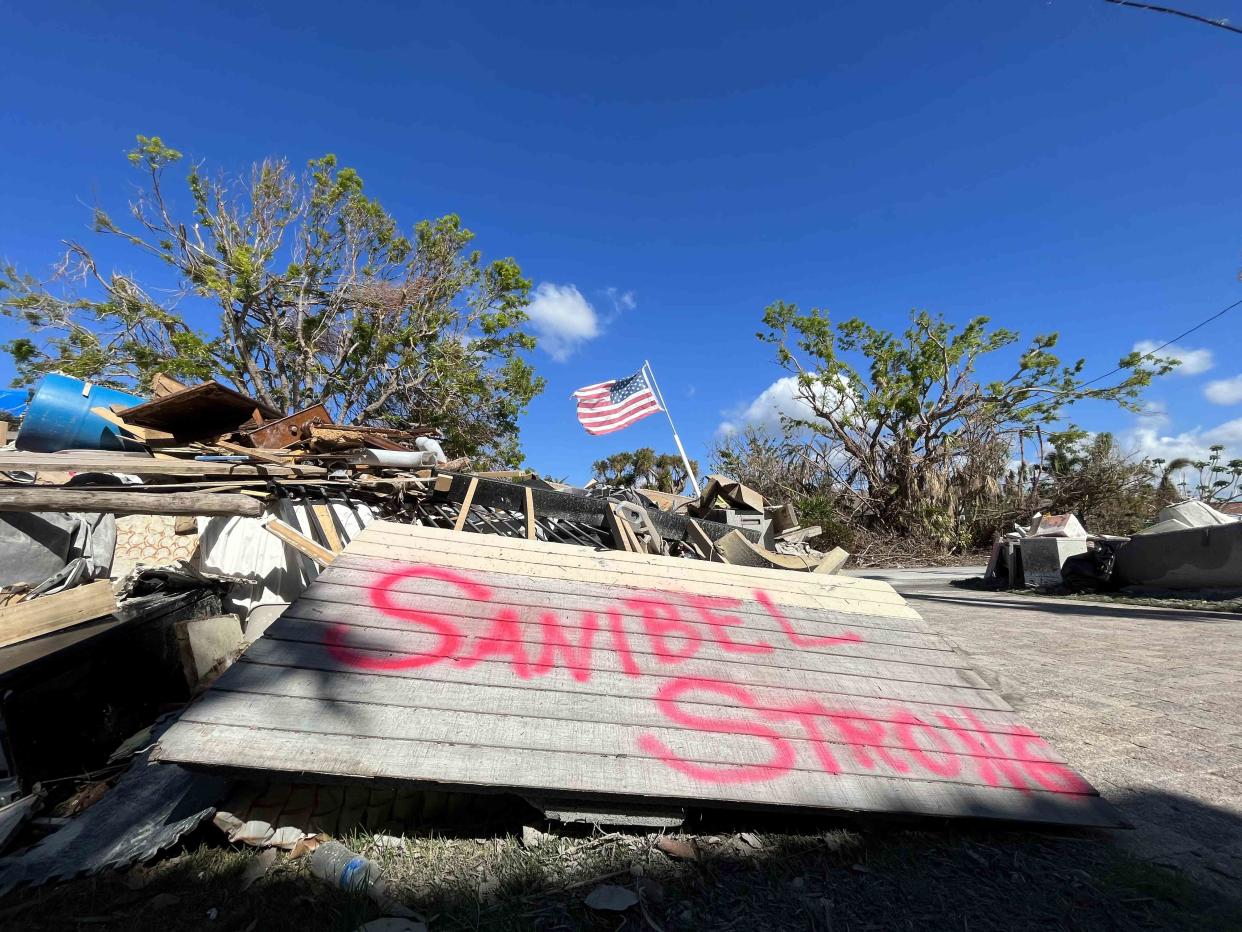
Mary Ellen Pfeifer
- Oops!Something went wrong.Please try again later.
Sanibel Island is one of those rare Florida gems. This sleepy barrier island just 20 miles from Fort Myers was once known best for its bountiful shelling and wildlife. It remained under the radar, separated from the rest of the world by a 3-mile causeway that seemed to protect its low-key way of life. But last year, Sanibel Island hit national headlines—and not for its vacation potential.
Looking Back
On September 28, 2022, Hurricane Ian struck the area as a Category 4 storm, causing catastrophic damage. According to National Geographic, the hurricane was Sanibel’s worst storm since 1926 and one of the worst storms in recent Florida history. Ian hit with winds upwards of 150 miles per hour and 8-to-15-foot storm surge, completely submerging homes and buildings.
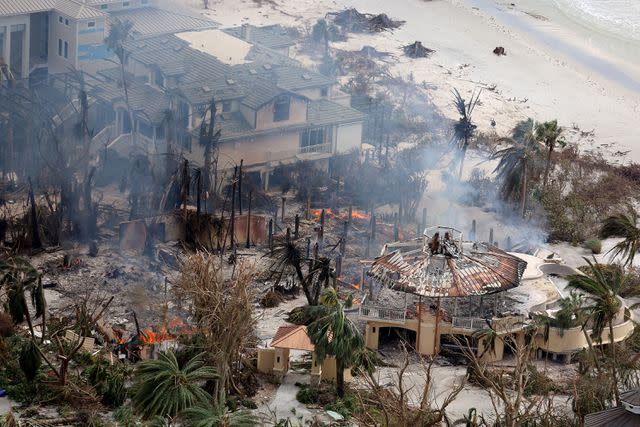
Joe Raedle/Getty Images
Thousands of structures in the community were reduced to rubble, trees and vegetation were wiped out, and power lines were downed. Much of the furniture and appliances in homes became destroyed and unusable, creating piles of trash on the roads to be taken to the landfill.
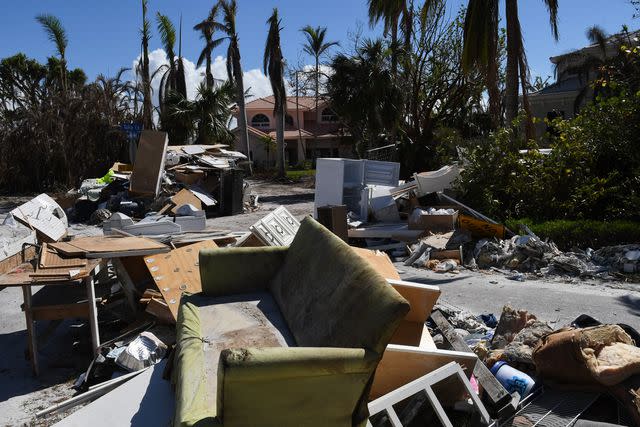
Paul Hennessy/Getty Images
The Sanibel Causeway that once welcomed residents and visitors to the island was also partially destroyed. With no access to the island, residents were left wondering what remained of their properties and hometown.
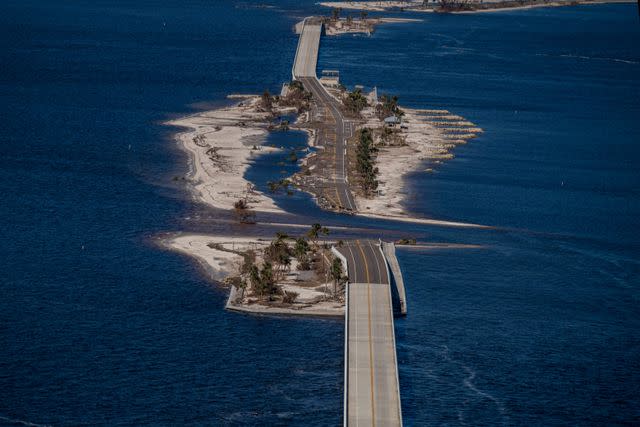
Ricardo Arduengo/Getty Images
An aerial picture taken on September 30, 2022 shows the collapsed Sanibel Causeway.Eric Pfeifer, broker-owner of the Sanibel-based Pfeifer Realty Group and a Sanibel resident for over 22 years, reflected back on the island’s demeanor after the hurricane.
“Nobody had experience with this [level of calamity], and people were getting very frustrated and upset wondering why they could not get to their houses,” Pfeifer said. “It simply could not be done: this was not only a hurricane, this was a disaster.”
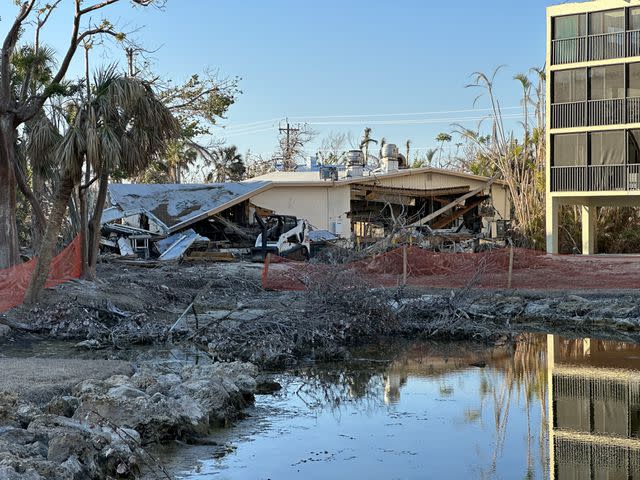
Marc Fribush
A restaurant completely destroyed after the storm surge.The extent of the disaster came as a shock to Pfeifer and many other Sanibel residents.
Pfeifer recalls how he and his wife “had been through several hurricanes in our 22 years on the island and we felt that we were prepared for it.” While south Florida has experienced its fair share of hurricanes throughout the years, not all of them come with such devastating storm surges.
“The last time Sanibel had a storm surge was in 1960 with Hurricane Donna," Pfeifer said. "People, including myself, let their guards down and didn’t expect a storm surge.”
Rebuilding
Though the majority of the island is still in recovery, the rebuilding efforts are grounded in future protection.
“The Lee County Task Force was started to discuss lessons learned and come up with a playbook if this ever happens again,” said Pfeifer, who was appointed to the Planning and Capacity committee of the task force. The task force has been working on several big projects to make Sanibel safer from natural disasters like Hurricane Ian.
“There is now a place for a barge to come over to Sanibel, tie up safely, and bring equipment and emergency vehicles back to the island,” Pfeifer said. “But the biggest change is the causeway. The sides of the bridge are being fortified by sheet pile walls so that it won’t fall out like it did. They are also raising the roadway on the barrier islands by a few feet as well.”
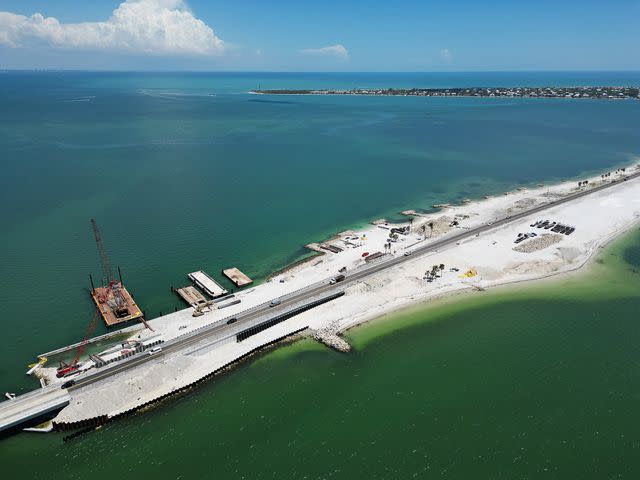
John Grieshop/Getty Images
Reconstruction of the Sanibel Causeway is adding more safety features.Planning for Future Travel
Along with safety development, the city has been actively working to reopen for tourism as soon as possible, though this doesn’t come without its challenges. Without condominiums for vacation housing, the island and its businesses aren't able to operate at typical capacity. Even still, some businesses have already reopened to service Sanibel residents.
One of the businesses, Jerry's Foods, was able to reopen in under a month after the hurricane. Jerry's is one of the primary grocery stores on the island and is elevated 15 feet above ground which made the damages less severe.
Even without the normal number of people in the store, Pfeifer says that Jerry's being open saves Sanibel residents from traveling miles off the island to the nearest grocery store on the mainland.
Of the reopening, Pfeifer says that it was a "godsend." Not only does Jerry's provide islanders with food and other necessities, it brings back a sense of normalcy that was so quickly taken with the hurricane.
Working for What's Next
Looking forward to the future is what’s keeping the people and businesses going. While the aftermath of the devastating hurricane naturally begs the question of when Sanibel will fully reopen, Pfeifer says that it’s less about the when and more about the what.
“When we get through this, Sanibel is going to be a lot more valuable,” he says. “The island will have all new condos, hotels, stores, restaurants, and construction that’s up to code. I just don’t know if that’ll be in 2, 4, or 5 years.”
Though it's smaller than many Florida vacation towns, Sanibel Island has been a place important to many people for generations. With the community's efforts to rebuild, it will continue to be so.
"It was my wife’s dream to live here," says Pfeifer. "She vacationed here as a little girl with her parents and she always wanted to move to Sanibel. She said one day when we were dating, 'I want to take you to my happy place.'"
If you'd like to help contribute to the rebuilding efforts on Sanibel Island, you can find a number of fundraising campaigns throughout the island here.
For more Southern Living news, make sure to sign up for our newsletter!
Read the original article on Southern Living.

